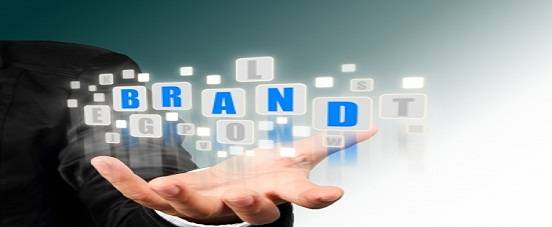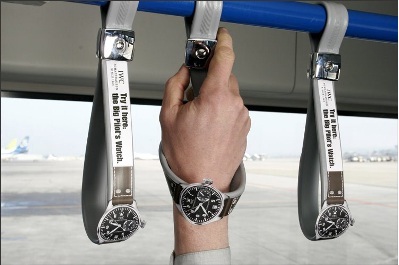- Articles ›
- Marketing and Strategy ›
- Brand Activation: Bringing Spirit Of Brands To Life Articles
Brand Activation: Bringing Spirit Of Brands To Life
Brand activation has been traditionally defined as a process by which customers are engaged with a brand. However, brand activation is a lot more than that, it is engaging the customer with the brand experience and activating the brand in the mind of the customer in the sense that it brings your brand to life.

IWC, the famous Swiss watch makers, used these stickers on the holds in airport buses to catch the attention of traveling pilots and other passengers for their new "Big Pilot's Watch".

The example presented above is a classic case of a marketing phenomenon gathering momentum and popularity every moment, BRAND ACTIVATION. The focus is on establishing an emotional connect with the brand via a lingering experience. The connect to be established is based on an insight about customer psyche. In an increasingly competitive market it is extremely difficult to distinguish one through only features. A competitor does not take time to either copy an innovation or even go one better.
In such a scenario, creating an emotional bond between the customers and brand will go a long way in serving the brand. What is required to be done is to make a brand, first, a part of people’s conversation and then, a part of their life. The idea is to bring about a transformation from ‘brand conversation’ to ‘brand advocacy’.
Driving on a peer-to-peer impact the brand establishes itself in the heart of the people and converts them into customers. The fact to be kept in mind is that values & emotions one associates with a brand are a lot harder to imitate than its features. Ultimately the whole point is of brand activation is that customer gets a feel of the product rather than knowing all its qualities.
At no point should one believe that brand activation is only for newly or yet-to-be launched products. One of the major purposes of brand activation is brand reactivation. Through a series of carefully planned interactions with customers/potential customers, life is breathed into a flagging brand. This is most evident in case of Pampers.
P&G tried to establish pre-natal associations with mothers, when its sales fell down, by providing online information, newsletters, among other such services. This pre-natal connection with mothers translated into a bonding with the brand at an emotional level. P&G clearly understood that women don’t buy brands, they join them and hence the activation techniques worked perfectly well for them in the case of Pampers.
The rise of social media is also another reason for the surfacing of brand activation. People are no longer idle, they are an active voice, influencing, convincing and in some cases, confusing others about brands. Neither the reach nor the strength of networking sites such as FaceBook, Twitter etc. is hidden from anyone. In such a scenario it becomes all the more important for organizations to realize and recognize the latent power of brand activation.
Another propelling factor is change in psychology of customers. Now they want to be involved with a brand. Co-creation is also, incidentally, a part of brand activation. Involving customers at every stage of brand evolution has become need of the hour. Lays chips started a competition wherein consumers had to suggest flavors for the chips.
The impact of brand activation can be ascertained from following cases:
- According to a study in U.S. it was found that 68% of consumers who posted a complaint or negative review on a social networking after a negative holiday shopping experience got a response from a retailer. Out of those, 18% turned into loyal customers; 33% turned around and posted a positive review and 34% deleted their negative review.
- In honor of El Dia del Amigo (Friendship Day), Coca Cola put up an 11 foot tall machine that would require thirsty consumers to seek help from their friends to reach the coin slot was placed in one of Argentina’s biggest cinema chains. After receiving the extra boost needed the friends received two Coca Colas for the price of one. In nine hours the ‘Friendship machine’ sold 800 bottles, which is 1075% more than a normal vending machine.
- Sneaker Freaker, a popular magazine about rare sneakers and the modern footwear craze, applied photographs featuring sneaker stalkers to random steps on the busiest escalator in Harajuku, Japan to give the illusion that these strangers were peeping at the “heat on the consumers’ feet!”. On a shoestring budget the campaign generated a huge buzz and interest in Sneaker Freaker magazine with the Sneaker Stalkers peering at over 100,000 feet over the course of a five-day period.
- To raise awareness about the rising sea level due to global warming, MTV Switch, MTV’s International's Global Climate Change Campaign, developed an amusing campaign that used two arms mounted on a small remote control submarine. When placed in the Amsterdam canals it seemed as if a submerged man was holding up a sign that read: Global Warming. What’s all the fuss about? The promotion was found posted in over 50 different blogs and covered in just as many magazines. It was also on more than 6,500 internet sites worldwide.
Brand activation provides a chance to organizations to strike a chord with its customers, something that Ads may fail to do. It is here to stay for good and the earlier the companies adopt it, the better it is for their brands.
This article has been authored by Lalit Gupta from IIFT.
Image(s): FreeDigitalPhotos.net
Views expressed in the article are personal. The articles are for educational & academic purpose only, and have been uploaded by the MBA Skool Team.
If you are interested in writing articles for us, Submit Here
Share this Page on:
What is MBA Skool?About Us
MBA Skool is a Knowledge Resource for Management Students, Aspirants & Professionals.
Business Courses
Quizzes & Skills
Quizzes test your expertise in business and Skill tests evaluate your management traits
All Business Sections
Write for Us